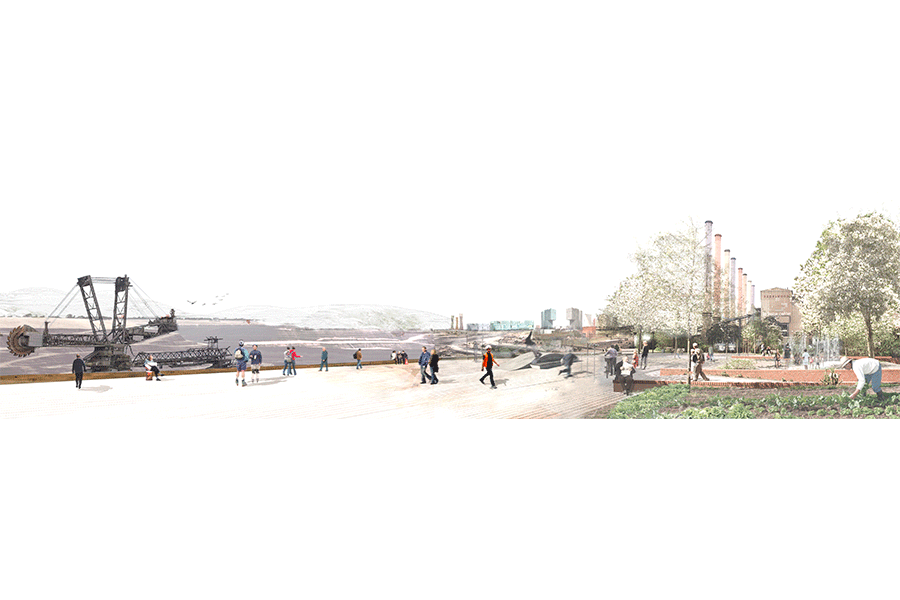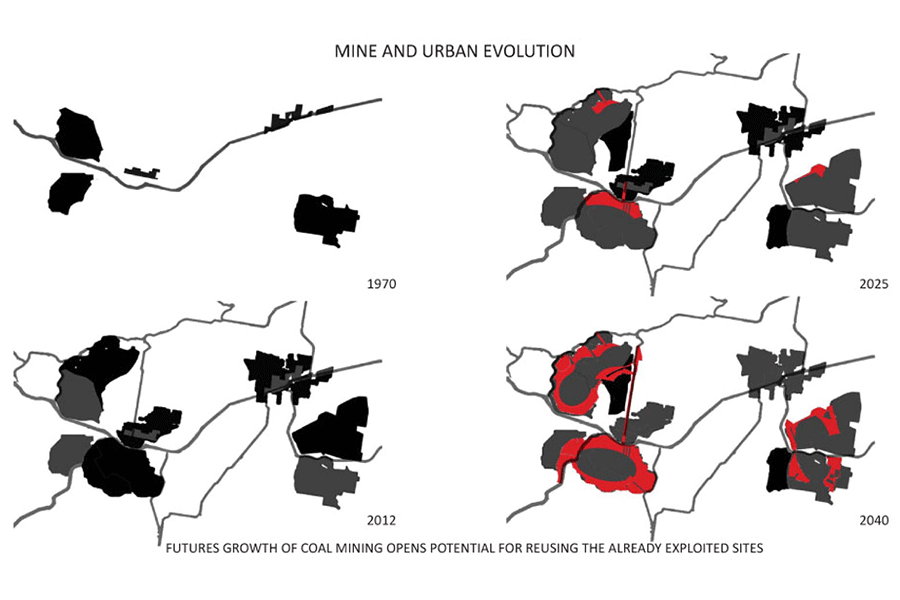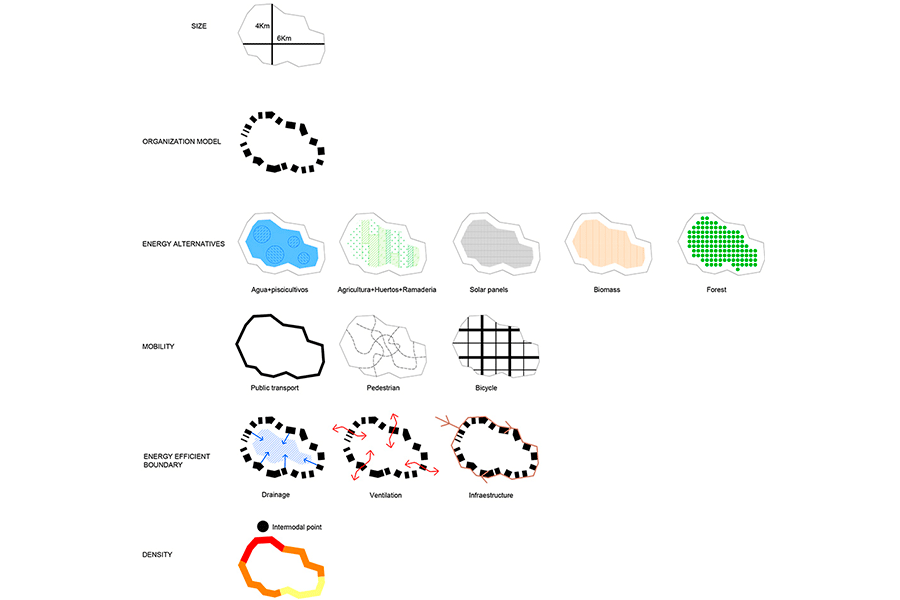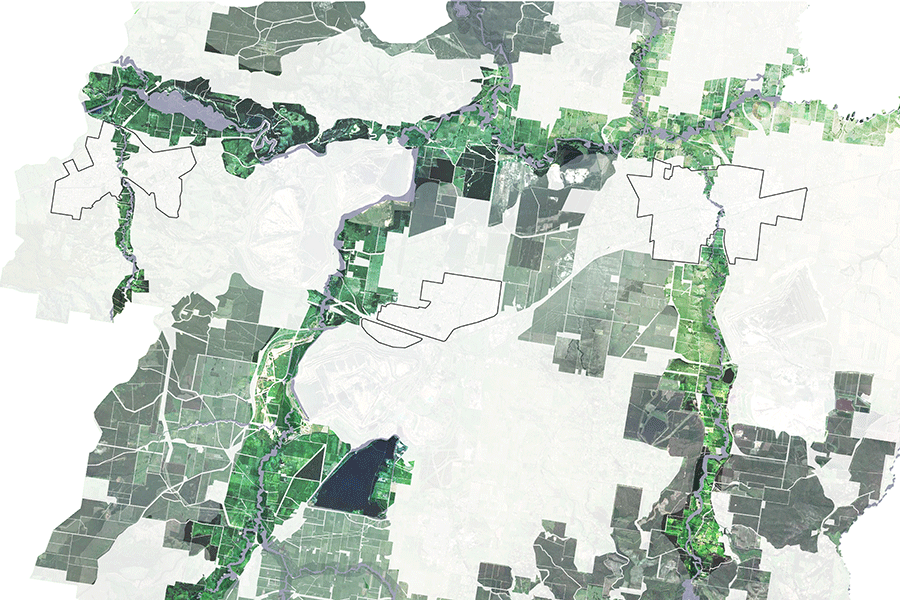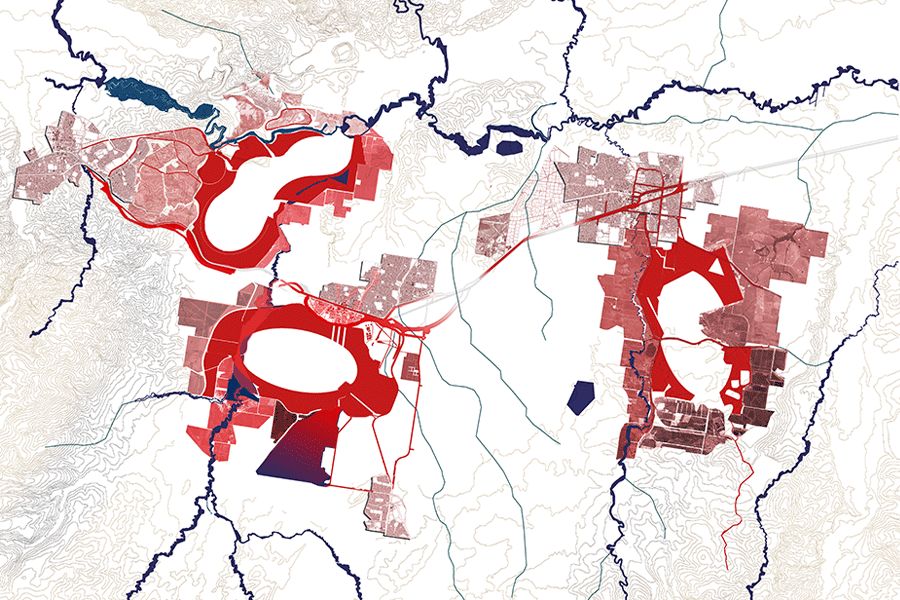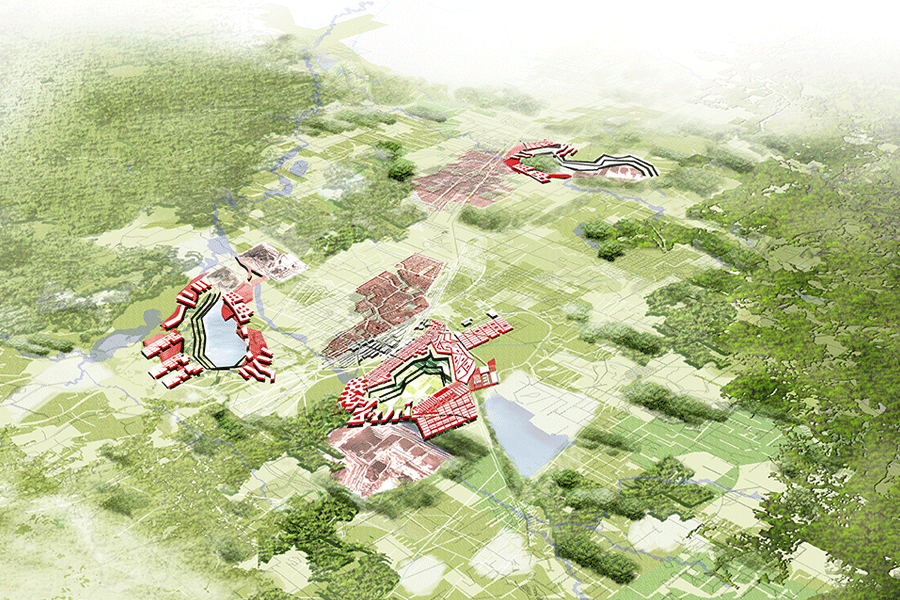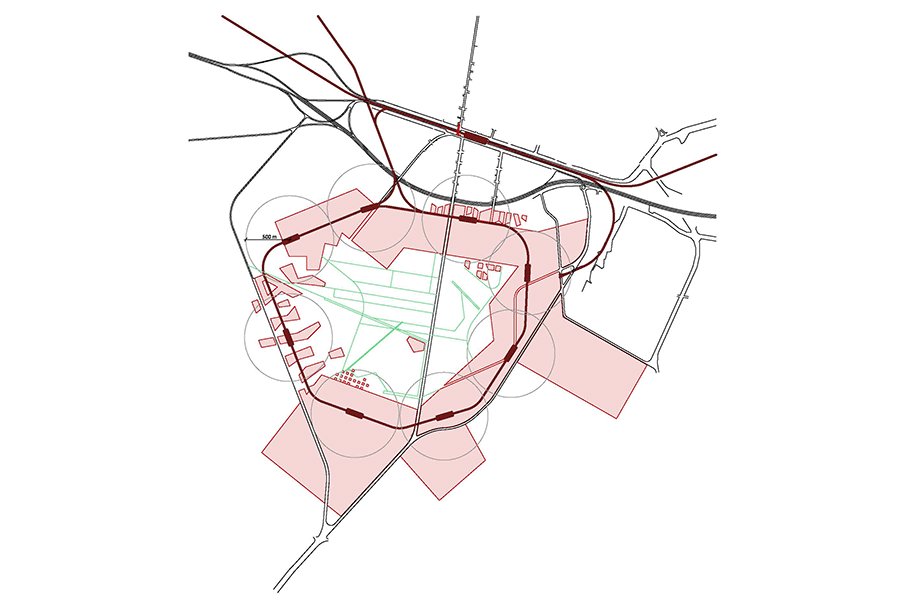TRANSITING CITIES – LOW CARBON FUTURES
Situación: Latrobe valley, Melbourne – Australia
Cliente: Office Urban Transformation Research – RMIT University
Sup: 6.000 Ha
Concurso: 2012
Propuesta Finalista
Equipo: Jordi Safont-Tria, Anna Gutiérrez, Álvaro Cuéllar
Colaboradores: Mariano Pérez, Carmen Boyer
From independent territory colonisation processes to a combined production valley.
Mining the city recognizes the relationship city-mine as the DNA stamp of this valley, proposing that in the future the interdependence between productive activities (mine), urban habitat and natural landscape constitute a trinomial; understood as a positive and supportive way to restructure the territory. To occupy the already exploited mining areas is the opportunity for the valley to turn into a sustainable energy productive hub that integrates the mines with the rest of the pieces, allowing for the re-greening of the landscape and the new city.
To reach this new territorial vision, the proposal is summarized in three actions:
1. The mine’s displacement: evolution through time.
The rules and rhythms of the mine’s industrial exploitation set the growth’s speed and shape of the future city. While the mine moves forward searching for more coal, it “releases” land that is potentially usable by the new growths. This interlinked nature generates a landscape that is understood as a sequence of ever changing and evolving situations throughout time. The recovery of these exploited areas allows for a gradual transformation of the mine into a city with new recycling systems and non pollutant energies.
2. Projecting the boundaries: Occupational model.
Throughout time, cities and mines have evolved independently under their own set of rules. There has been a dispersion of urban pieces that consume the territory and undermine natural areas. Against this dispersal model, we propose concentrated urban developments around the already used land by the mining industry. A city that is more compact is more sustainable and allows the flow of natural systems. The future developments of the city are located in the perimeter of the pit, which build new permeable boundaries that, as tentacles, extend and interact with the territory. Create new residential fabrics, empower diverse social groups and motivate the appearance of new mixed activities. Complement the territory city with a new mobility network and a new public transport ring around the pit.
3. From coal to other sources of energy: the economical alternative.
Enhance Latrobe valley as the region’s energy generator. Only coal has been exploited as the main source of energy. We propose the diversity of an energetic matrix by enhancing various forms of renewable energy sources, which may be complementary. The colonisation of the pit boundaries releases a big vacant inner space with a huge potential for the development of new energy production exploits and open green areas. Latrobe Energy Valley will become a hub of technological companies related to the energy production based on the sustainability objectives. It will also be a Lab dedicated to the research for the development of new energies and non pollutant production processes.

